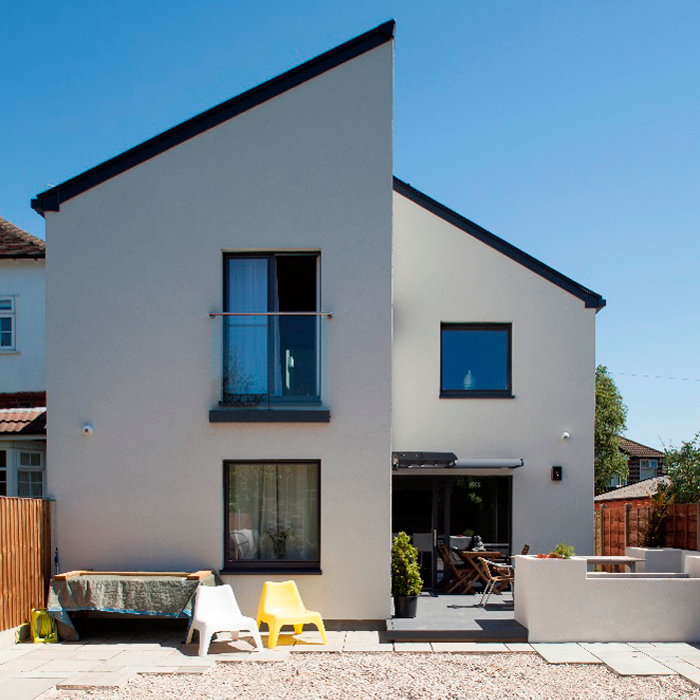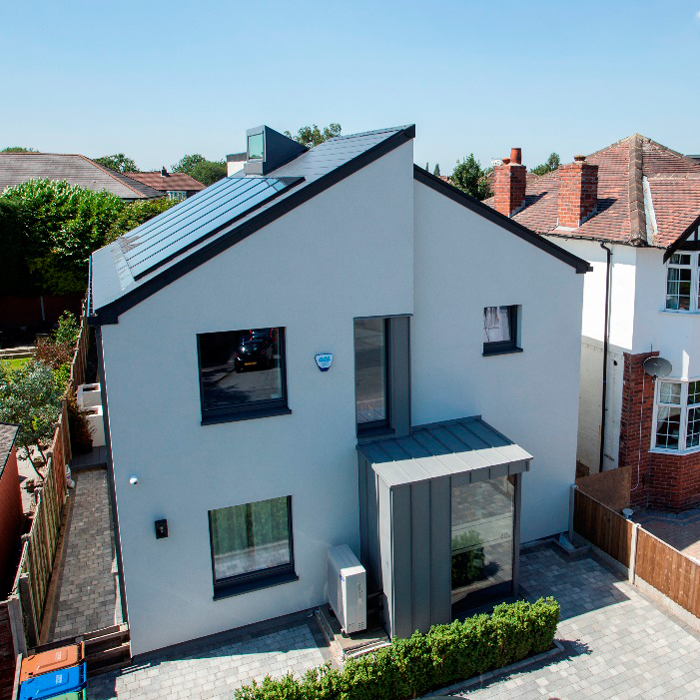Passivhaus is widely recognised as one of the most demanding energy efficiency standards around – and a popular goal for self-builders looking to create a bespoke, long-term home.
The standard is underpinned by three fundamental elements: high levels of insulation, very low levels of air leakage, and the use of ventilation with heat recovery.
Couple these with good design that takes into account the attributes of the plot to manage solar gain, and you will have a home that requires virtually no energy to heat.
Why build a Passivhaus?
Since it was established back in the early 1990s, the Passivhaus standard has consistently shown the true potential of a fabric-first construction approach.
This approach can lead to the creation of highly energy efficient properties that don’t have to rely on expensive renewable technologies.
Imagine a home that maintains a constant internal temperature, whatever the weather, with only a heated towel rail needed to provide the occasional boost. Passivhaus can deliver that.
One of the criteria for achieving the standard is that the building must not use more than 15 kWh/m2/year for heating.
These demands on building envelope performance could make it challenging and costly to achieve Passivhaus with a traditional brick and block approach.
How SIPs can make Passivhaus easier
Structural insulated panels (SIPs) offer a well-established alternative to traditional techniques. The system provides inherently excellent fabric performance and airtightness, with a simple, streamlined construction programme.
Even more importantly, SIPs make it possible to build standards such as Passivhaus without the need for excessively thick walls. You also retain complete design flexibility, whether your tastes run to the ultra-modern or a more traditional appearance.
Case Study: A SIPs Passivhaus
Steve and Mel Howarth hired certified Passivhaus designers, PHI Architects, to create their dream home. After considerable research, PHI selected the Kingspan TEK Building System to form the walls and roof of the structure. The firm worked closely with highly experienced Kingspan TEK delivery partners, Point1 Building Systems, to achieve an extraordinarily energy efficient design. “Steve and Mel specified a structural insulated panel construction in their initial brief as they were keen to utilise the benefits of off-site fabrication,” says architect Sara Darwin. “The Kingspan TEK Building System scored highly on thermal efficiency as the core insulation material has a lower thermal conductivity than other products. As a result, wall thicknesses could be minimised which was critical given the relatively tight plot.”
The system’s excellent airtightness was also essential, as it minimised the amount of air leakage across the entire structural shell. “This allowed us to incorporate design elements such as an L- shaped living space, which added extra external surface area to the home,” says Sara. “A good airtightness result can reduce energy consumption by 1 kWh/m2/year, which can make the difference between a pass and fail.” Point1 Building Systems were responsible for achieving the interface detailing Sara designed. “They were very confident that we would meet the air leakage requirement as the panels are inherently airtight,” she says. “With the added membranes and tapes they installed, we were able to achieve an outstanding test result of 0.45 air changes per hour @ 50 Pa.” As well as the high-performance fabric, the Kingspan TEK Building System also allowed for impressive design features, such as open vaulted ceilings for the first floor rooms. “The tall ceilings create a feeling of space and light and the overall daylight qualities in the house are excellent,” says Sara. |
An example of a typical SIP construction would be two OSB3 (oriented strand board) facings with a rigid thermoset insulation core. The demanding thermal performance requirements of the Passivhaus standard can then be easily met with the addition of an insulated lining.
SIPs & airtightness
As well as providing excellent levels of insulation, the jointing arrangements inherent in SIPs can provide extremely airtight structures, with air-leakage rates as good as 1m3/hour/m2 @ 50 Pa.
Once airtight tape is applied to junctions, this rate can be reduced even further to the 0.6 air changes per hour @ 50 Pa required by the Passivhaus standard.
Common construction techniques can be susceptible to air-leakage at a number of points, including:
- Through poorly sealed sockets or switches.
- At floor zones through masonry cavity walls.
- Under skirting boards.
- Through poorly sealed loft hatches and top storey ceiling light fittings.
Using SIPs can help to alleviate these issues.
The post SIPs: The Fast Track to Passivhaus appeared first on Build It.
Article reference SIPs: The Fast Track to Passivhaus


No comments:
Post a Comment